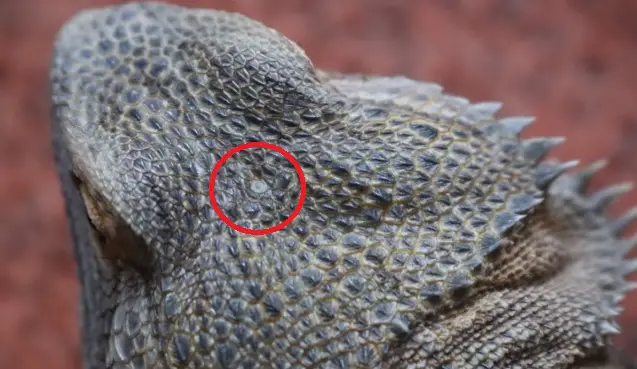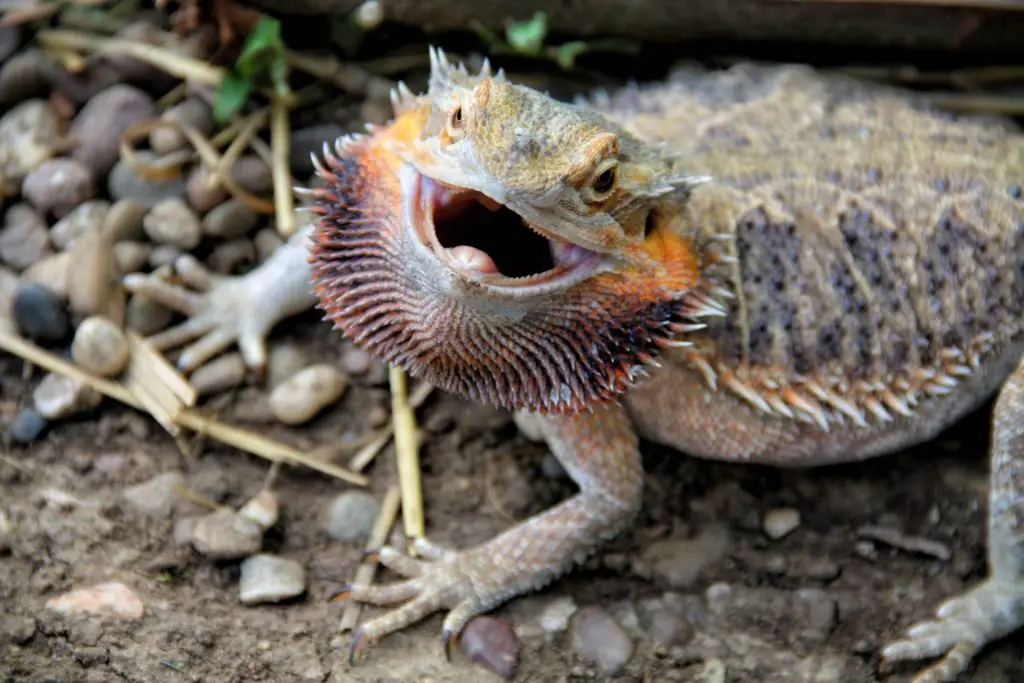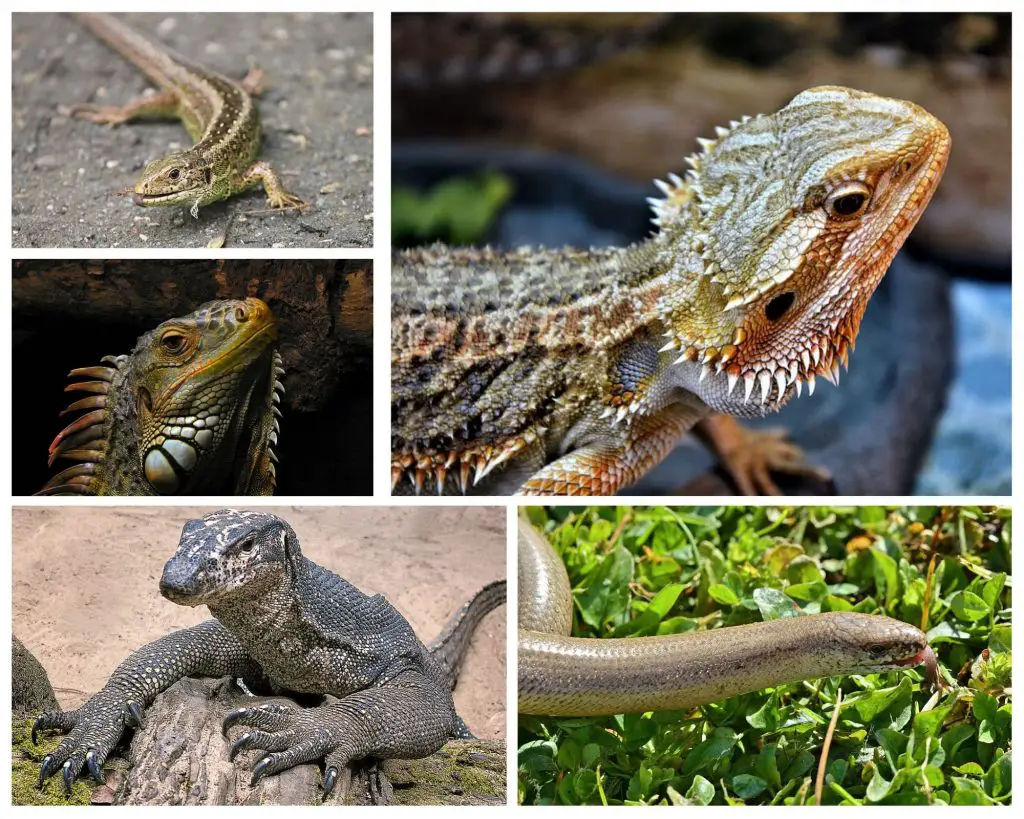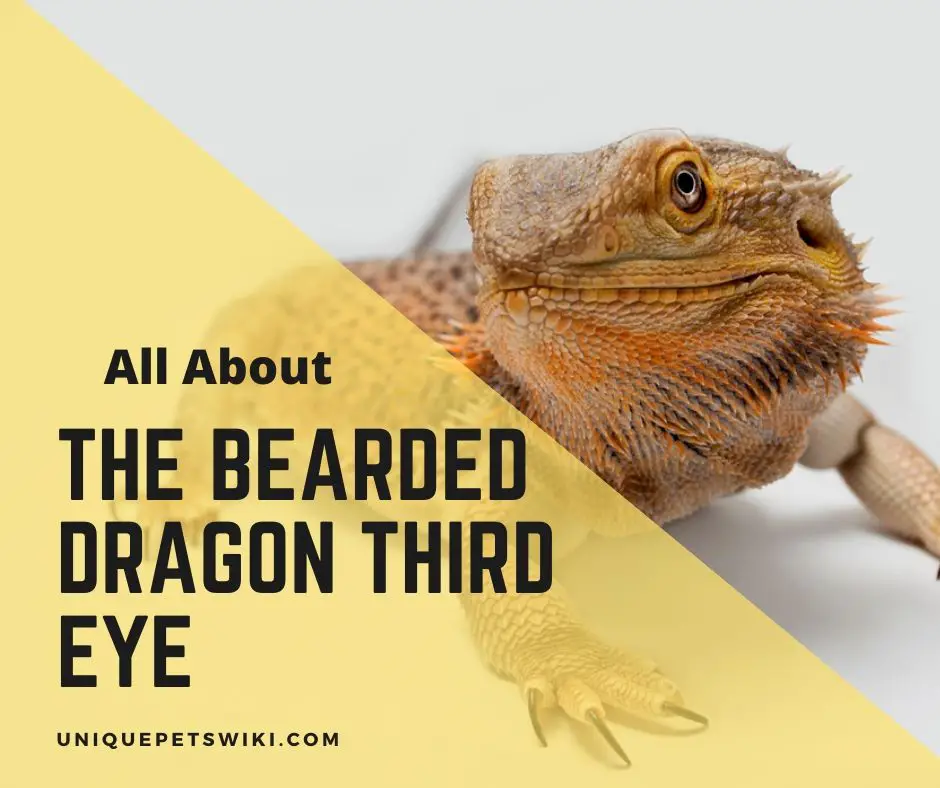What is a bearded dragon’s third eye? Bearded dragons indeed have a third eye. But what’s it exactly, and how is it essential to the beardies?
Now that you are aware that bearded dragons have a third eye, we will learn more about it and see what it does. We are also going to see why the existence of this eye in beardies requires you to handle them with care.
This article has been reviewed by Dr. Dilber. Read more about our knowledge control process here.
Contents
What is Bearded Dragon Third Eye?

(Source: Taylor Crane YouTube)
Imagine that you are a new dragon owner, and then you just decide to inspect your beardie to know about it, and then suddenly, you notice it has a third eye. Shocking, right? But here you are now; you know that beardies truly possess a third eye.
This pretty fantastic eye in bearded dragons is called parietal, pineal, or solar eye. It is a small gray mark on top of their head, between the eyes.
The beardie parietal eye, like a standard eye, has a retina and lens, but it lacks an iris, and that makes it look different from a typical eye. A precise scale covers the third eye, and you can see it. The retina and lens of the third eye are not developed as on the normal eyes.
Pineal eye connects directly to the beardie’s brain through a tiny hole in their skull. The dragons use this eye in various ways, as we are going to see in this article.
This eye tends to send signals to the pineal gland rather than the optic center of the brain, making it not to see things similarly as the standard eyes.
Why is Third Eye in Bearded Dragons Important?
There are so many facts and stories about the beardie parietal eye, where some theories argue that beardies can see with this eye. Other posts reveal that the eye is used for other different functions. So, who is right?
New to bearded dragon? Check out the bearded dragon care sheet now! We had listed out all the things you need to know about bearded dragons as pets. Check it now!
The truth is, bearded dragons do not use their third eye to see like they do with the standard eyes. They use this unique eye for other different and essential functions. Below are few things on how a bearded dragon uses its third eye.
Bearded Dragons Use their Third Eye to See Predators

Bearded dragons can sense there is danger using the pineal eye. Although, they cannot see clearly that something or predator is above them. Your dragon can only sense there is shadow above it or simply notice that the light above has changed.
The nerves of the parietal eye are directly connected to the brain which helps bearded dragons to respond to stimuli frequently. The sensory cells of the eye detect the presence of predators of anything around them.
The wild bearded dragons usually run to hide if they detect the presence of a shadow above them. Whether it is truly a predator or something else, most of them will not withstand any shadow.
Bearded Dragons Use Parietal Eye as a Compass
Bearded dragons are territorial animals; any time they are away from the territory, they tend to get back freely. What helps them to navigate to their home?
The parietal eye of the dragons helps them to locate other dragons and their locations. (It is considered an important sensory organ. it works antennae at the top of the dragon’s head.)
The beardies need their third eye to locate their way back home. They can go to the furthest place away from the territory, and return without any problems when this unique eye is uncovered.
Studies have proved that when you cover the beardie’s parietal eye, it is difficult or impossible for them to get back to the territory.
Even if the normal eyes are open and the dragon can see the way when you are transporting it, they can’t come back without the help of the pineal eye.
Third Eye Role in Bearded Dragon Biological Function
The beardie’s third eye is connected to the pineal gland. Both the gland and third eye are called the pineal complex and are photosensitive. Based on the time of the day, the pineal gland secretes hormones like melatonin that regulates sleep and wake cycle.
The third eye is also responsible for detecting temperature and regulating the sleep cycles. When it is time to sleep, third eye send message to pineal gland to release melatonin which is responsible for sleeping.
The pineal complex is responsible for setting the internal clock to detect the time of the day, which influences the production of hormones.
Therefore, the bearded dragon’s third eye is vital to help the beardies in detecting light and dark for hormone production and thermoregulation. It helps them to regulate the amount of light they require and avoid excessive metabolic activity that can shorten life.
Why Should You Know About Your Bearded Dragon Third Eye?
Your dragon spends most of its time in its enclosure, where they are well protected from predators. You may not be interested to know about the third eye having in mind that your bearded dragon pet is safe in the tank.
But believe me, it is necessary as a dragon handler to know about this distinctive eye. This is because the majority of the people tend to pick their bearded dragons from the head. You may notice that they are trying to escape and get skittish whenever you try to grab them.
It may create some concerns for several people who may keep wondering why their beardie behaves strangely. Others will not even pay attention to that because they are unaware of what might be happening.
The truth is, any time you approach your beardie from above, you create a shadow above it. The beardie will think that it is a predator trying to seize it, and it suddenly gets frightened. That’s why the majority of them try to flee.
That makes me think that it is always better to buy an enclosure with front doors and not the opening on top. This will prevent you from grabbing your beardie from above, and there are minimal chances of stressing the beardie.
Always avoid all the situations that can expose your pet to stress. Stress may be pretty harmful to the beardie. Handle them with a lot of care to keep them happy at all times.
How to Make Sure that You are Not a Threat to Your Beardie?
After going over the third eye and how you may be causing stress to your beardie, it is crucial to make sure that you don’t startle the dragon. I’m going to show you how you can handle your dragon comfortably without stressing them.
Approaching the bearded dragons from above can threaten them and can induce stress.
New to bearded dragon? Check out the bearded dragon care sheet now! We had listed out all the things you need to know about bearded dragons as pets. Check it now!
Don’t miss anything; keep reading along.
The first thing, just as I have mentioned, is to use enclosures with front or side doors. However, these kinds of habitats are more expensive, but they are worthy if you have them. If you can get one, the better, it will help to approach the beardie at its eye level and avoid stressing it.
Another critical thing to consider is that when you take your beardie, ensure you reach it below the belly and make sure your hands support all its legs. The tail should also be well supported.
Then, pick up the beardie slowly, avoid any fast-moving object, and be sure not to lean over it. It helps to prevent anything capable of causing stress. Be keen and watchful because the dragon can jump off to the ground.
What Other Lizards Have Third Eyes?

There are a few of the lizard species that possess a third eye apart from bearded dragons. It is a unique organ to all the reptiles that assist them mainly to know when seasons change.
They can detect when the days are longer and the night shorter, and when nights get longer and days shorter. The brain is always informed of how the seasons are changing.
Other lizards with third eyes are Monitor lizards, Slow-worms, some Iguanas, Skinks, and Lacertas.
Protecting Your Bearded Dragon Third Eye
It is necessary to prevent your bearded dragon from anything that can damage its third eye. Below are a few of the things to consider as part of husbandry practices.
- Do not Provide Light to Your Beardie at Night
Bearded dragon third eye is a photosensory organ, making the beardie not to need light at night. This eye can detect light, including ultraviolet and ultrared light. If you provide any kind of light at night, whether red or white, it will only disturb the beardie’s sleep.
Bright white light is recommended during the day, also ensure there is a proper distance between the dragon and the light. Typically, this distance should range between 6-12 inches.
The third eye can detect both light and dark, thus measuring the photoperiod of light. The light has a direct influence on the biological clock.
In the day or presence of light, dragons speed up and carry out the metabolic processes of the body. If the light source is available at night as well, the third eye will detect the light and will send the signal to the body. As a result, the metabolic process will proceed which can lower the life of the dragon. So, the light should be off at night.
- Bright Enclosure is Vital for Biological Functions
Lizards need to detect light for biological functions; therefore, it is crucial to provide bright light in the daytime. If it is possible to expose them to the sunlight, the better, but the cage light still works well.
- Moving Between Natural Sunlight and Artificial Light
In case your beardie has a chance to get exposed to sunlight, which alternates with the artificial light, beware of its reaction. Some beardies become distressed when they move between sunlight and artificial light.
There is a possibility that sunlight impacts something through the beardie’s pineal eye.
- Automatic Lighting Cycles
Automating the lighting cycles with a timer in the cage is vital to ensure that the third eye’s biological functions are working rightly. It guarantees there is consistency the same way it will be in the natural environment.
Conclusion
I hope this article has been of great help, and you now understand about bearded dragon third eye. The pineal eye is essential for bearded dragons biological clock , thus influencing hormone production and thermoregulation. Therefore, you always need to consider it in husbandry practices.
The eye also helps the beardie in other essential ways. You are now aware of why it is necessary to be knowledgeable about the bearded dragon’s third eye.
Having this information with you helps you always to expose your pet to a stress-free life. When your beardie is happy, you are also excited.
